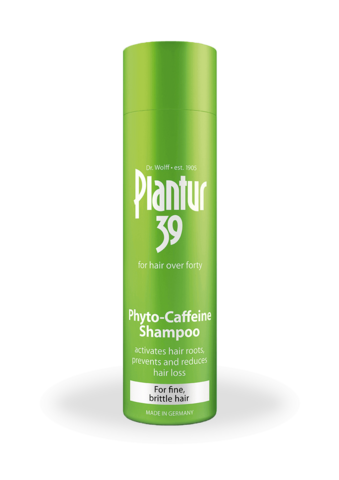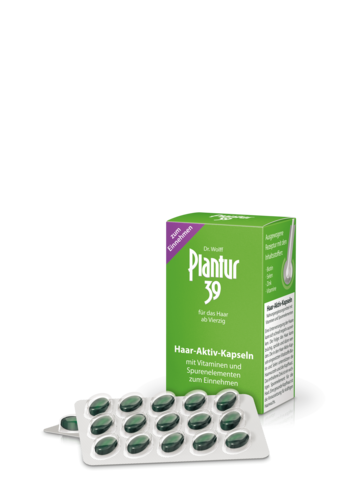Hair loss in autumn: What does our hair need now?
How to strengthen your hair growth
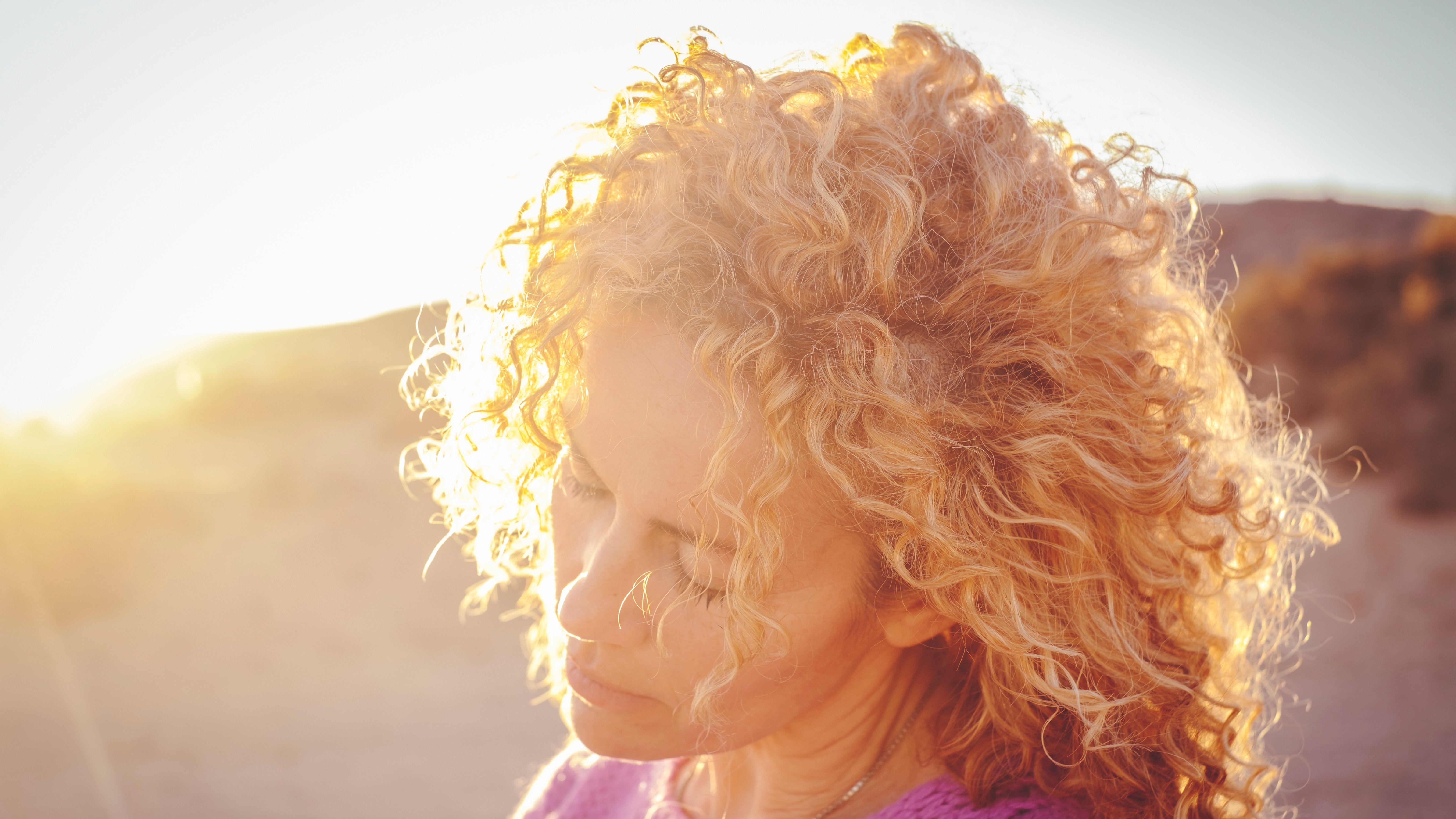
Hair loss in autumn is a widespread phenomenon. Many women notice more hair in their hair brush or plughole, on their pillow or clothes at this time of year - every year, But is it actually normal for more hair to fall out in the autumn? Should I be worried about it? And must I come to terms with the annual “moult” or can I do something about it?
Various scientific studies have actually been able to prove that hair growth follows an annual cycle. Especially in the autumn, lots of hair follicles are at the end of a resting phase, resulting in them eventually falling out. So seasonal hair loss isn’t actually a figment of your imagination.
Nevertheless, if hair does fall out, it is not only unpleasant, but it can also be unsettling for women. We reveal what you can do about seasonal hair loss, how long it lasts, when you should be particularly careful and why the summer is the true culprit.
Contents
- Help: What can you do about hair loss in autumn?
- Hair care: This is what your hair needs now!
- Diet: Food for strong hair roots
- Styling: Avoiding hair breakage
- Length of time: How long does hair loss in autumn last?
- Causes: What affects the hair cycle?
Help: What can you do about hair loss in autumn?
First of all, we can give the all clear. Hair loss in autumn affects lots of women and is totally normal to a certain degree. Science assumes that more strands of hair change from the growth phase to the resting phase as a result of stronger sunshine in the summer months. This saves energy and protects the scalp. About 100 days later, ie. in the autumn, the hairs fall out.
What is important is that a new growth phase then begins and the hair on your head grows back again. Seasonal hair loss is therefore not a permanent thing. Since a new hair root is formed, you just have to be patient in principle. Patience not your strength and it’s taking too long for you? We have a few tips in store for how you can support this growth, what you can do next year to prevent hair loss and how you can protect tired hair from additional stress.
Hair care: What our hair needs now!
Caffeine has a stimulating effect on hair roots, prevents the depletion of hair production and can extend the growth phase of the hairs. To do so, it has to get to where it is needed: the hair root. Coffee and beverages containing caffeine cannot achieve this. The solution: caffeine shampoo!
The phyto-caffeine complex in Plantur39 shampoos penetrates the hair roots while the hair is being washed. When it is left in for 2 minutes, the caffeine can unleash its full effect and can be proven to stay in the hair root for up to 24 hours. Zinc and niacin provide it with additional nutrients and provitamin B5 smooths the hair texture. Used regularly, it even improves hair thickness, making the hair look fuller. For even more smoothness and shine, we recommend using Plantur39 conditioner on the hair lengths.
Do I have to wash my hair every day? No, you don’t have to go without the daily application of caffeine on the days you don’t wash your hair. Plantur39 Phyto-Caffeine Tonic is applied directly to the scalp and briefly massaged in; it is quickly absorbed into the scalp and doesn’t need to be rinsed out.
Diet: Food for strong hair roots

You are what you eat. So the saying goes. Our diet has a big influence on our body, our wellbeing and even our hair growth. Broadly speaking, our diet should always be balanced to ensure we get enough useful nutrients for all our bodily functions.
In the case of hair loss in the autumn, the sunshine plays a crucial role. Antioxidant foods should be on the menu to balance out free radicals and oxidative stress. Vitamin A, vitamin C, vitamin E, carotenoids, flavonoids and trace elements such as zinc, selenium and copper are antioxidants, which also occur naturally in our food. These natural radical scavengers are primarily found in plant-based foods and fish.
The following are examples of foods said to have an antioxidant effect and a positive influence on hair growth:
- Spinach
- Grapes
- Carrots
- Tomatoes
- Apples
- Wholemeal products
- Pulses
- Good quality vegetable oils
- Nuts
- Salmon
Food supplements for hair can also play their part in supplying it with the necessary nutrients. They should be used carefully though, because too many vitamins and trace elements are not always beneficial. Equilibrium and balance should be the priority when it comes to diet.
Styling: Avoiding hair breakage
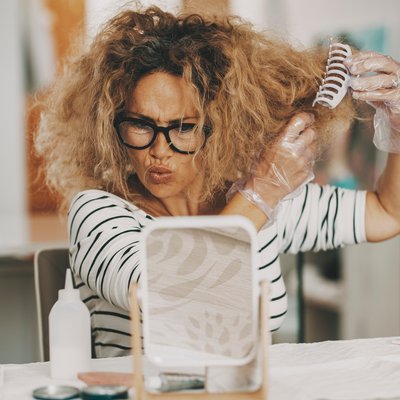
If your hair is stressed by sunlight, you need to be as gentle as possible with your damaged mane. You should pull your hair as little as possible when styling. Which means exercising caution when brushing and combing: preferably remove tangles gently (moving upwards), instead of using force. Even a tight plait or bun can stress your hair roots in the long run.
And what about dyeing your hair? It’s a myth that dyeing your hair can lead to hair loss – so long as you don’t have an allergic reaction to the hair dye. However, frequent colouring, especially with dyes containing hydrogen peroxide, can damage the structure of your hair. The hair eventually dries out more easily, split ends are more likely and the hairs might break.
Colouring shampoos can offer a gentler alternative. The Plantur39 Colour range refreshes the hair colour of brown or blond hair every time it is washed. So you can bring a bit of colour and shine back to dull and faded hair and even conceal those grey roots – without dyeing your hair at all and of course with the proven phyto-caffeine complex!
Sun protection: prevention next summer
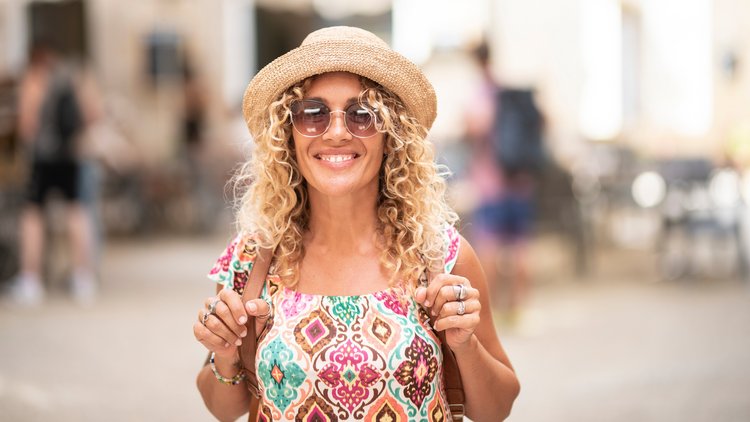
It might also be a good idea to think about sufficient sun protection for your scalp in the next summer season. Especially when you are on holiday or spending a lot of time outdoors, in the garden perhaps, wearing a head covering not only protects the scalp from direct sunlight but also screens your gorgeous locks from UV radiation to a certain extent. This means you will also prevent your hair from bleaching.
Length of time: How long does hair loss in autumn last?
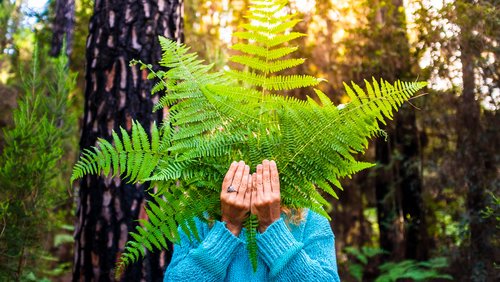
How long the phase lasts in which you find more hairs in the basin or on your hairbrush differs from person to person. Normally, this situation just lasts a few weeks or up to a couple of months. Strictly speaking, hair loss in the autumn is not true hair loss (alopecia) since the hair on the head grows back after it has been shed. You could therefore call it moulting.
If your hair loss continues – meaning if more than 60 to 100 hairs are still falling out every day in the winter, or over a longer period of time – it would be advisable to see a doctor, because more serious causes might come into question. These include stress, nutrient deficiency and hormonal changes, which can be the cause of hair loss during the menopause, for instance.
Early warning system for hair loss?
Moreover, temporary hair loss in the autumn can also be a kind of early warning system for hormonal or age-related hair loss. A Swiss research team studied seasonal hair loss among over 800 women. Women without hair loss and women with genetic, age or hormone-related hair loss took part in the study1. Two of the conclusions the researches came to are very interesting:
- They were able to prove that seasonal hair loss occurred with all the women, irrespective of age or predisposition.
- They also noticed that women who were already affected by some form of hair shedding themselves perceived the moulting in autumn much stronger in comparison to the group as a whole.
Their theory is that as a result of the additional hair loss in the autumn – even if it is not permanent – the hair shedding is so visible that it also becomes clinically apparent.
Causes: What affects the hair cycle?
The reason why we lose more hair in the autumn and late summer especially is still not fully explained. However, science assumes that the stronger UV radiation during the summer months affects the growth cycle of hair.

Our hair growth follows a defined cycle. It consists of the growing, transitional and resting phases:
- Anagen phase: This is the active growth phase of a hair. Every single hair on your head follows an inner rhythm which determines the length of the growing phase. This time span can last from 2 to 6 years. During this time, the hair follicle continues forming new cells which harden, causing the hair to grow. On average, 90% of all the hairs are in this phase.
- Catagen phase: During a transitional phase, cell division comes to a standstill. The hair root is cut off, is no longer supplied with nutrients and becomes smaller. This phase only lasts for a few days and up to two weeks.
- Telogen phase: In the resting or shedding phase, the hair is no longer firmly anchored in the scalp. It still doesn’t fall out straight away but it can last up to 100 days (about 3 months) until it finally detaches itself from the scalp - for example, due to a slight tug when combing the hair or because it is pushed out of the hair canal by a newly growing hair. Then a new growth phase begins.
External influences on the hair cycle
Altogether, every hair follicle can go through this life cycle 10 to 30 times until no hairs grow back again. It is therefore ideal if every hair cycle lasts as long as possible so that we can enjoy a full head of hair into our old age. As well as internal factors that determine the length of the hair cycle, there are also external factors that may contribute to the growth phase being terminated prematurely. These include, for example:
- Infectious diseases can weaken the body so much that hair growth is also impaired. Primarily diseases with a high fever, such as malaria, can have this effect. At present, hair loss after COVID-19 is also being observed as one of the symptoms of long covid and is the subject of scientific research.
- Lasting stress in the form of psychological stress or emotional strain can have an effect on various bodily functions and even bring on the early onset of the telogen phase of the hair.
- Strict diets, which don’t supply the body with enough energy over a longer period of time, can lead to the nutrient supply to the hair root also suffering and it being pushed out prematurely.
- Hormonal changes, for example through pregnancy, the menopause or diseases such as an under or overactive thyroid, not only affect the hormonal balance but also hair growth.
- Hair is not bothered by UV radiation up to a certain degree. However, in strong sunshine combined with high temperatures, such as in the summer or on holiday, lots of hairs switch to the resting phase.
More sun = less hair?

Science assumes that UV radiation from the sun is a decisive factor in the occurrence of seasonal hair shedding. In the summer, we are actually pleased about the extra hours of sunshine. But these extra hours can mean pure stress for the hair and scalp.
UV light is known for stimulating the formation of free radicals. These are highly reactive oxygen molecules, often known as ROS in scientific jargon. Firstly, it is quite normal for there to be free radicals in your body. However, if there are too many free radicals, oxidative stress may occur which can disrupt cell division and cell renewal.
In the case of our hair, the UV radiation can even have two effects2, 3:
- Hair colour: Long-wave UVA rays can penetrate the hair itself and have an effect on the hair colour there. This is why our hair often looks lighter or bleached after the summer months.
- Hair growth: UVA and UVB radiation penetrates the outermost skin layers but sometimes also the deeper ones, stimulating the formation of free radicals, which can impair the production of hair cells if they are too abundant.
If the body doesn’t have enough radical scavengers, for example in the form of antioxidants, to balance out the oxidative stress, then less crucial bodily functions including our hair growth, are restricted. Basically, it is therefore a protective mechanism of our body.
A study from 2019 was also able to prove that caffeine can counteract UV damage to the hair follicles3. Not only can we help our hair grow back healthy and with renewed strength in the autumn with careful handling, valuable nutrients and high-quality hair care, we can also support it all year round with sufficient energy for a long growth cycle!
More topics on hair growth and hair loss

Grey hair
Why does hair actually go grey? Read about the explanation and causes here. Learn what you can do about grey hair too.
Quelle
1 Kunz M. et al: Seasonality of hair shedding in healthy women complaining of hair loss - PubMed (nih.gov); 2009
2 Trüeb R. M.: The impact of oxidative stress on hair - Trüeb - 2015 - International Journal of Cosmetic Science - Wiley Online Library; 2015
3 Gherardini J. et al: Transepidermal UV radiation of scalp skin ex vivo induces hair follicle damage that is alleviated by the topical treatment with caffeine - PubMed (nih.gov); 2019



